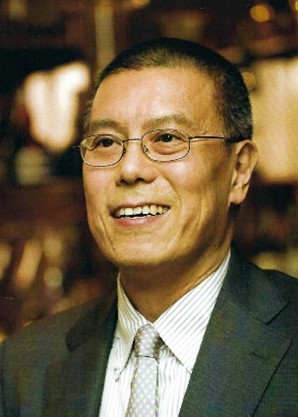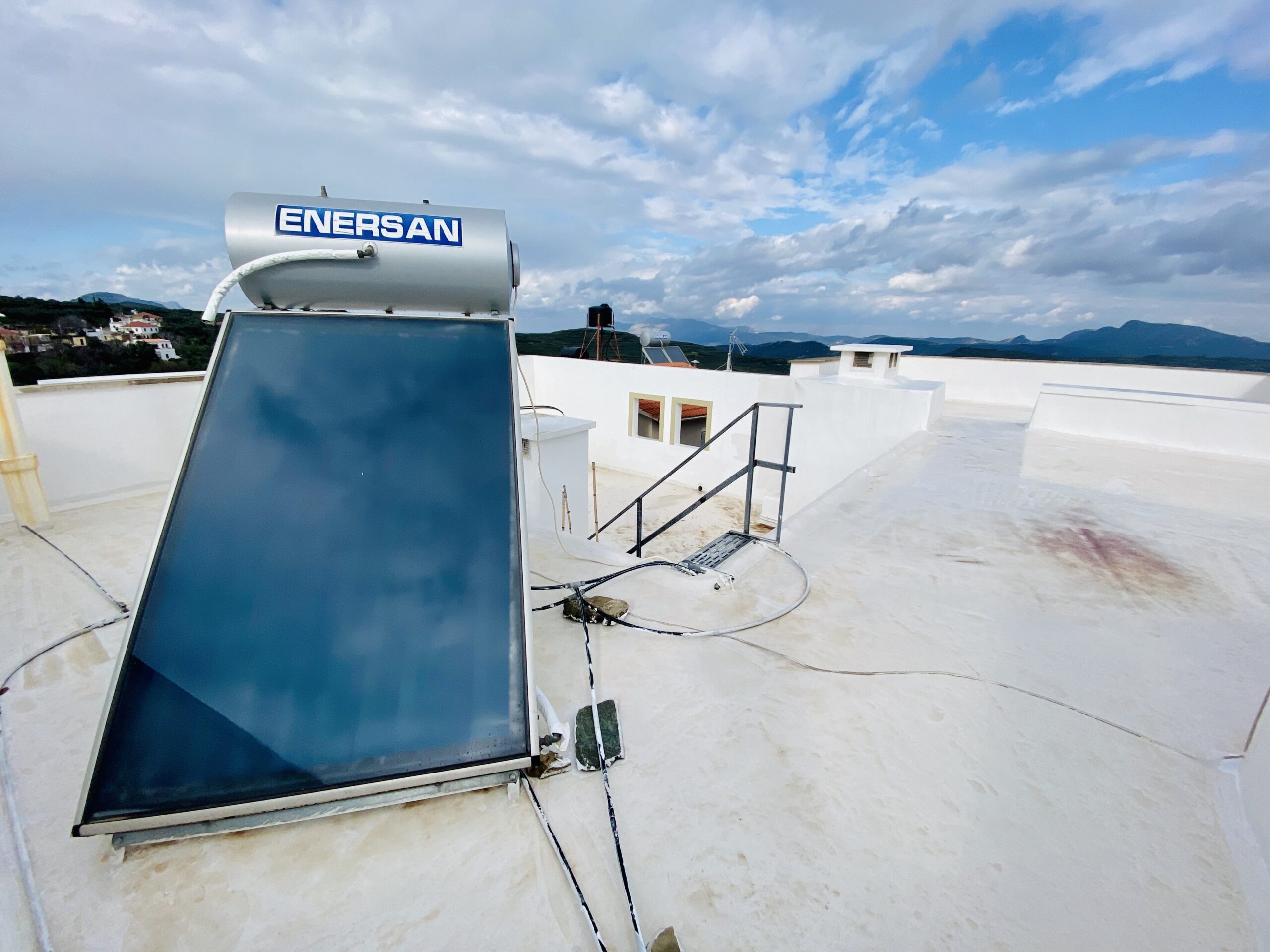By Anna Rauter
In November, our research team hosted the Energy Ethics 2020 (EE2020). I ‘zoomed’ in to the event from the comfort of a warm office, powered by – and yes I will concede this – oil heating. Some may justify petroleum-based heating above coal-fired electricity to heat homes. I, however, admittedly did not feel good about discussing energy ethics whilst simultaneously using fossil fuels to heat the space from which I co-organised the event. And this got me thinking; while we spoke in detail about large-scale energy initiatives at the EE2020, what about all the individual households around the world – including those in the EE2020 audience – who might want to make a conscious energy choice but just like me, may be limited in their options? This is the first in a series of posts that will examine individual energy choices. To kick off this series, I am delighted to share with you the interview I conducted recently with Paul Cheng, the CEO of Plus Renewables – a company that develops and manages wind and solar technology projects around the globe.

Paul Cheng is the CEO and founding shareholder of Plus Renewables, a global developer and manager of wind and solar energy generating projects, providing renewable electricity to communities around the world.
Paul and I first met during the EE2020, where we had the chance to exchange our personal reflections on energy matters. I told Paul that I have spent the past months living in a village on the Greek island Crete. While the island is known to have an average of 300 days of sunshine per year – enough sunlight to power the solar panels that almost everyone in Crete has installed on their roofs to heat their water – Cretan winters are cold and wet, with limited sunlight. Particularly from November until March, we, in our household, rely on oil heating and also consume more electricity (of which 50% is generated by the island’s petroleum power plant). In our conversation at the EE2020, I mentioned to Paul my disappointment that even in sunny Crete we do not currently have household-use solar technology available that can supply families with enough electricity to do more than just heat the water. Responding to this, Paul informed me that solar technology is constantly developing. He noted that most household solar panels are outdated within a year and are also not as sophisticated as their large-scale counterparts used in solar parks. Curious to learn more about the state of the art of solar tech, I arranged an interview with Paul a few weeks after the EE2020.
“In terms of renewable technology, we are still at the equivalent of the stone age”
Right at the outset of our interview Paul told me: “In terms of renewable energy technology we are still at the equivalent of the stone age”. Slightly stunned by this evaluation, I asked Paul to tell me more about the limitations of individual-use solar technology.
Paul: There are a few technical elements here. Firstly, the home solar panels are in a fixed position and as such, they do not always get the maximum exposure to sunlight, which means that they are not working efficiently. Secondly, when the panels are fixed directly on a roof there is only a small air gap between the roof and the back of the panel. This results in something like a greenhouse effect; as the sunlight is going through the glass, heat is created. So, if the space between the panel and the roof is narrow, there is not enough area to dissipate the heat, which actually makes the efficiency of the solar panels much lower.
To give you an example: I have solar panels in Malaysia where it is 33°C and then I used to own a system up in Aberdeen hospital in Scotland. I looked at power production data of the solar panels in each of the two different locations and [in the summer] the values were comparable in both places!
Anna: And why is that?
Paul: Because it is cooler in Aberdeen! Meaning that the solar panels can work more efficiently. That is why people are now talking about floating solar. That is putting solar panels on top of water, where the water acts as a heat sink.

But back to the households; so, solar panels on a roof are not as efficient due to limited space, light exposure and air circulation. That is where community energy projects come into play. What we [at Plus Renewables] do, is that we find a piece of land on which we build a ground-mount system, which is connected directly to the individual households of a community. That makes it much cheaper simply because the fixed bottom solar park has maximum exposure to light [as panels rotate with the sun throughout the day]. And this system does not waste energy; because if one household is not using the electricity produced, their neighbour will be using it.
Anna: Ah yes, I have seen such solar farms around Crete. They seem to supply electricity to nearby villages.
But then most people here also have flat roofs, so they put one or two solar panels on the roof, upright but at an angle, facing south for maximum sunlight exposure. So, these are not directly on the roof, but instead standing. As such air circulation should be better than if they were directly attached to the roof. We bought our solar panels two years ago. And in the summer, when there is sun, we get very hot water, but in the winter when there is less light, it is not even enough to warm the water slightly. On the roof of our house we would also have the space for more solar panels, but I just wonder – are the solar panels that are available to purchase for household use efficient enough?
“As the renewable technology business is becoming more efficient, it is also becoming a lot cheaper”
Paul: Yeah, in five years’ time you probably have much more efficient panels. Technology is advancing very quickly. Moreover, as the whole renewable energy technology business is becoming more efficient, it is also becoming a lot cheaper. When you think about it, you would expect that the more efficient a technology is the more expensive it becomes. But it is the other way around – the price curve is coming down as technology is getting better.
While households, such as ours in Crete, may not yet have available solar technology that can power homes, Paul’s predictions for the future of renewable energy technology felt comforting to me. Not only did he argue that renewable – and particularly solar – technology would drastically improve in efficiency in the coming years, but also that the side effect of this efficiency-gain would be lower prices. This would mean that renewable energy options will become available for more people in terms of costs and energy efficiency. As such there is hope for the households around Crete; in a few years solar panels installed on our roofs will not only be able to heat the water in summer, but may also generate electricity for household demand throughout the year.
In our chat, Paul also acknowledged and problematised the issue of battery efficiency (for the storage of solar produced electricity) and batteries’ environmental ramifications. He was optimistic that technological developments and solutions could fix such problems in the future. Such technology optimism is also something I observed during my fieldwork in Oslo amongst Norwegian energy elites – the people in leadership positions of Norwegian energy companies. Their visions of the future were intimately connected to technological expectations that would bring salvation to our current energy and climate-environmental predicaments.
Thinking back to our Cretan village, one thing that Paul said also struck me: Paul’s company has two different target groups for solar projects; on the one hand Plus Renewables invests in places where people can afford to switch to solar panels and want to do so because “it makes them feel good”, as he noted. This includes North American and European markets for example where energy is available, but people want to switch to more climate conscious solutions. On the other hand, Paul’s business endeavours target countries where people have limited access to energy and where solar power can be a viable option to increase energy supplies to communities. This particularly includes communities in developing countries.

Reflecting on this, I was wondering into which of these two target groups the households in our Cretan village would fit. After the Greek economic crisis, and with the ongoing effects of the Corona pandemic, many people – also in our village – are struggling personally and financially. Switching to a more climate conscious heating and electricity system is most likely not among their top priorities. Since electricity is available on the island (except during the relatively frequent power cuts), people are not in the position of Paul’s second target group where people lack electricity supply. However, most people in our village are also not in a position to choose a different heating or electricity system; they are limited by availability of renewable technology, by cost factors, and might not be in a socio-economic position to even consider climate and environmental sustainability like the persons in other parts of Europe represented by Paul’s first target demographic.
So, what solutions are there for those of us who already have a (relatively) steady supply of non-renewable electricity, but would like instead to have a more cost efficient, more energy efficient and more climate and environmentally conscious energy system? What about those of us who find our available options and/or financial means are limited and thus revert back the “status quo”?
If Paul’s technology optimism turns out to come true, this means that in 5-10 years the households in our village will not only have more efficient, climate and environmentally conscious but also cheaper energy solutions available. While this is a comforting thought, I do wonder – can we, and our planet, wait this long to change our energy systems? What can we, as individuals, as households, do to speed up energy transitions other than by hoping and waiting for the development of better technology? Ultimately this is not only a question of energy justice, but also relates to the speed and availability of technological developments. In the next post in this series, I will examine the ways in which four different households on Crete approach and manage their own energy production and consumption. Whilst discussing in more detail the limitations of current energy options, it will also shed light on some innovative and creative ways in which individuals develop their own energy solutions. Stay tuned!
Many thanks to Paul Cheng for sharing his expertise and insights with me for this post.




